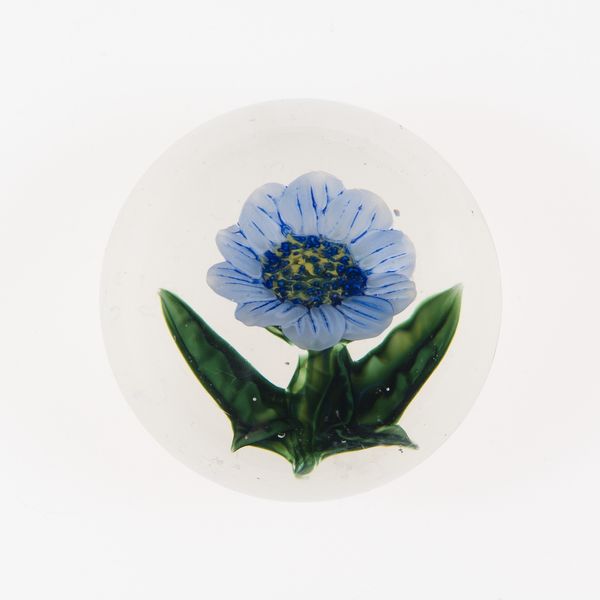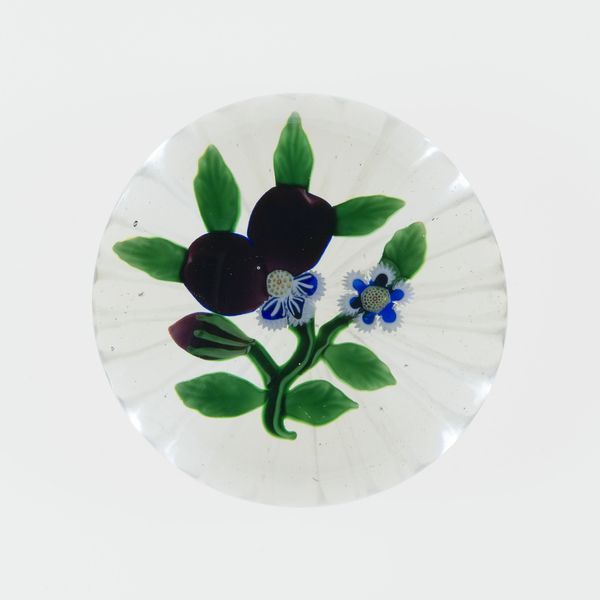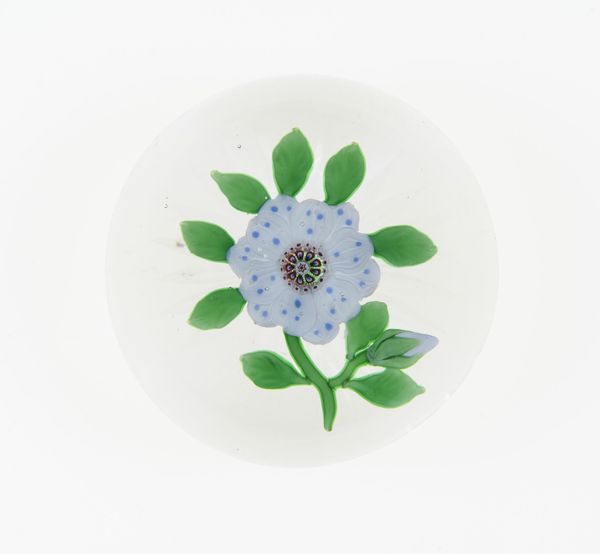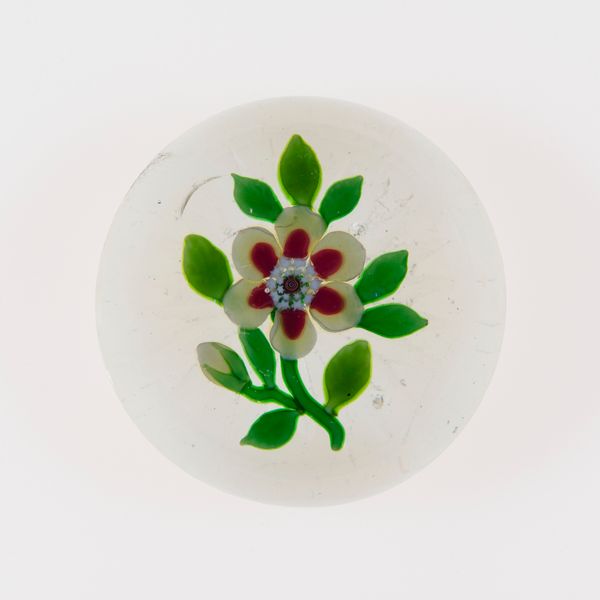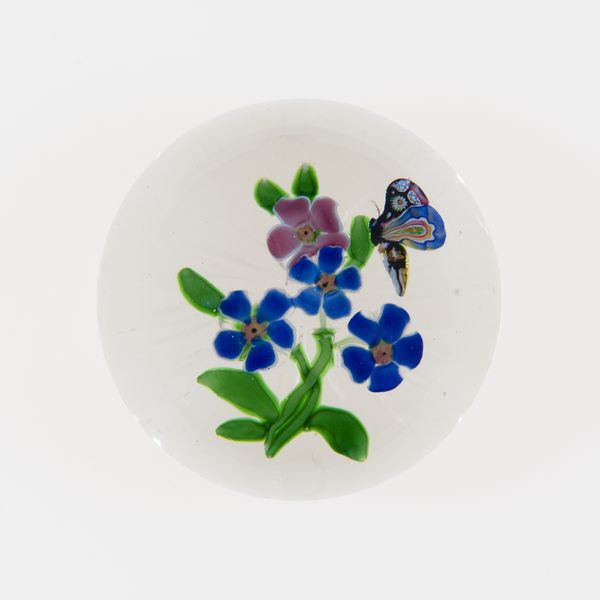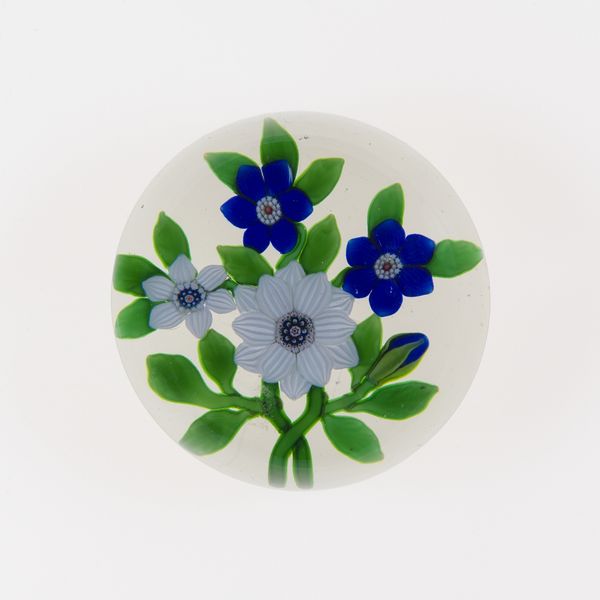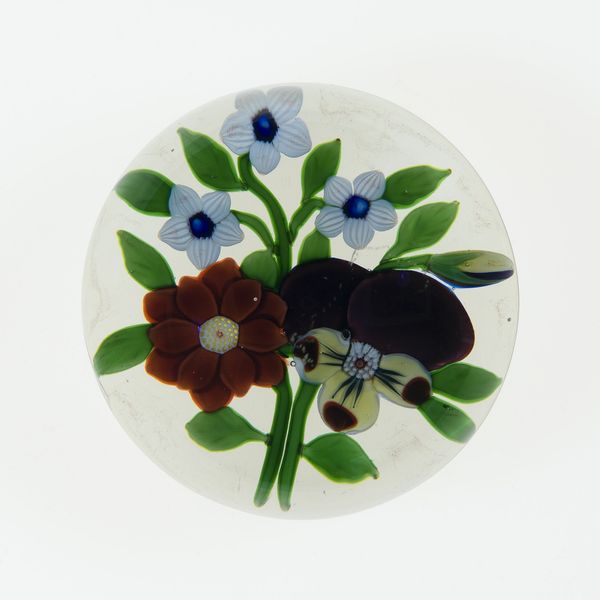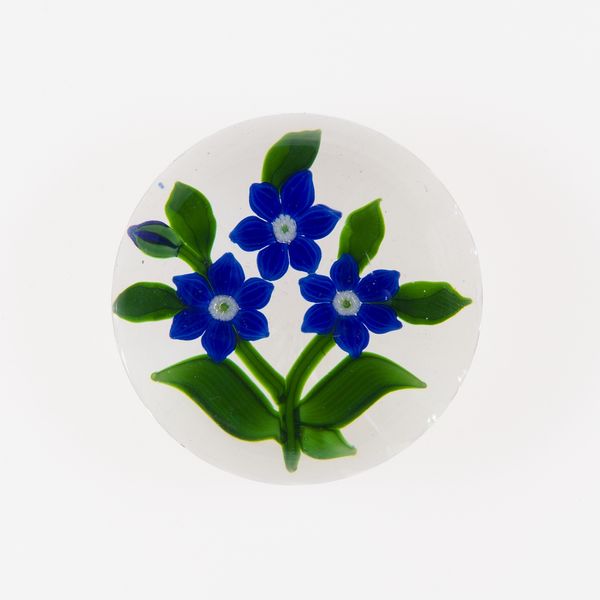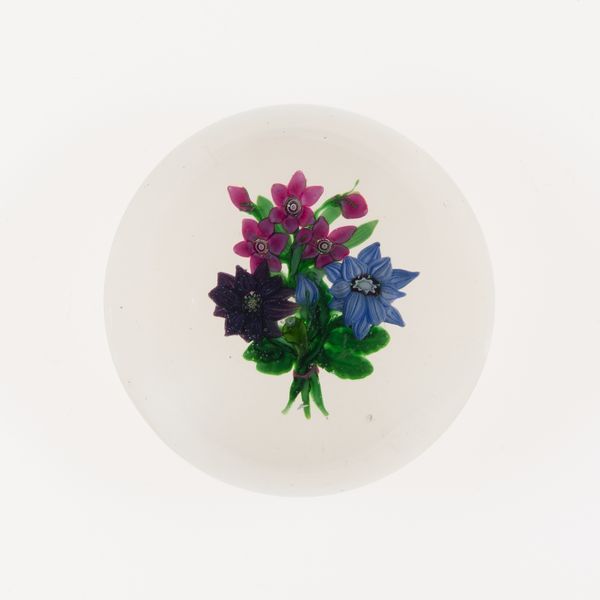
paper, glass
#
flower
#
paper
#
glass
#
geometric
Dimensions: Diam. 7.1 cm (2 3/16 in.)
Copyright: Public Domain
Editor: Here we have the “Paperweight” created around the 19th century by the Clichy Glasshouse, currently held at the Art Institute of Chicago. It's glass, of course, and features a single blue flower. It’s incredibly charming, but also, it feels somehow… precious. What do you see in this piece? Curator: Immediately, I'm drawn to the relationship between craft and consumption. This isn’t simply a pretty object; it’s a product, born from specific labor practices within the Clichy Glasshouse. Think about the process of its creation – the controlled heating and shaping of molten glass, the precise arrangement of each floral element. The intense labor contrasts sharply with the object’s purpose: a decorative item, meant to be consumed visually and perhaps displayed as a symbol of status. Editor: So, you’re focusing on the process and the intention behind it? I wouldn’t have thought about that right away. Curator: Precisely. How does the choice of glass – a material simultaneously fragile and permanent – affect our understanding of its cultural context? These paperweights were often made in areas with strong glassmaking traditions; Bohemia, France, and later the US. The social landscape surrounding glass production impacted not just the visual outcome but its intended circulation. It's a crafted item entering consumer markets and acquiring meaning through this exchange. Editor: It makes me wonder about who was buying these paperweights? Curator: Absolutely. Who had access to such an item, and what did its ownership signify? Furthermore, what relationship does this "high art" have to other functional or more popular glass products of the time? The flower frozen in glass offers a specific controlled experience that could only exist in these upper markets. Editor: I never thought a paperweight could tell us so much about social structures and manufacturing! It is something to meditate on when gazing at flowers. Curator: Exactly. By examining the materials, the process, and the intended audience, we can decode the messages embedded within this seemingly simple object.
Comments
No comments
Be the first to comment and join the conversation on the ultimate creative platform.
